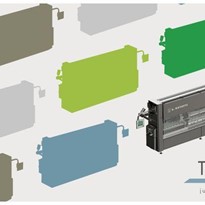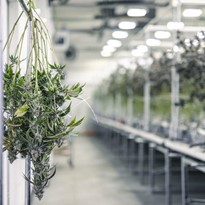“Essentially, all life depends upon the soil…
There can be no life without soil and no soil without life.”
Charles E. Kellogg (Soil scientist, US Department of Agriculture)
Soil is life. Planet Earth is, as far as we know, the only place in the solar system that possesses soil. The superb images being sent back from Mars by the five NASA rovers — Sojourner, Opportunity, Spirit, Curiosity and Perseverance — show a desolate, rock-strewn wilderness, blasted by wind and devoid of colour apart from the relentless shades of red. There is no soil, no water…and no life.
So here on Earth, we are pretty fortunate to have a biosphere that contains an abundance of soil. But in order for soil to be healthy and productive it needs to contain a lot of organic matter. And as human populations rise, soils are being placed under increasing pressure to produce more and more food. Luckily, there is a way to return much of the organic matter we humans produce to the soil. It’s called compost.
So let’s take a look at how FOGO waste is playing an increasingly important role in producing compost from garbage. But first, let’s talk about dirt.
Digging in the Dirt.
So what, exactly, is soil? According to Agriculture Victoria, soil can be described as “the loose surface material that covers most land” and which “consists of inorganic particles and organic matter.”
Sound soil structure
Soils give structural support to plants of all sizes and is the source of both the nutrients the plants use for growing and the water they need to survive. There are a vast number of different soil types across the planet, each with its own unique set of physical and chemical charisterics.
Good soil structure is vital for healthy plant growth. The ability of soil to store water and facilitate the movement of air and nutrients through the soil profile relies heavily on the amount of organic matter contained within the soil. The colour of soil is the main indicator of how much organic matter it contains.
The colour and the shape
Although there are many thousands of different soil types, soils conform to a small number of indications that define their parent material, drainage, degree of weathering and organic matter content. For example:
- Dark brown soils. These soils have a high percentage of organic matter. They are rich in available nutrients and hold plenty of moisture between the particles without becoming waterlogged.
- Black soils. Also known as chernozem soils (from the Russian word meaning “black ground”), these are soils which are highly enriched with organic carbon in the form of humus. Black soils are rich in phosphorus and ammonia compounds, making them highly fertile.
- Red soils. Australia is covered with red soils. The presence of iron in our landscape is what gives our ranges those rich red hues and our soils that deep chilli red colour. Red soils, however, contain less phosphorus — vital for plant health — and are often very free-draining which means less available water for plant growth.
- Yellow soils. Yellow soils typically form under broad-leaved forests in humid, sub-tropical regions. They have low concentrations of organic matter and are often quite acidic. The yellow colour is caused by the presence of ferric oxide. Yellow soils are common in New Zealand and Southern Australia.
- Grey or blue/green soils. These are the swamp soils. They are heavy, waterlogged and contain very little oxygen or available nutrients. Any organic matter present will be incompletely broken down causing an increased level of toxic compounds.
As you can see, the healthiest and most productive soil types are the ones containing large amounts of organic matter. That’s where compost enters the story. And the best source of urban compost is FOGO.
The FOGO Cycle.
Humans waste a lot of organic matter. For a long time, organic waste was simply buried in landfills along with all the other garbage and industrial waste that human civilisation creates. This resulted in large amounts of methane being generated as the organic waste decomposed in an environment devoid of available oxygen and lacking in microbes.
But nowadays, food organics and garden organics (FOGO) are being collected separately and processed into rich, nutritious compost. This removes most of the methane-producing matter from landfills which not only makes them less noxious but also creates additional space for inorganic garbage. Thus, landfills take longer to become full.
But best of all, FOGO is destined to enrich the soil of backyard gardens, city parks and farm fields. Here’s how it’s done.
Collection and screening
The food scraps, animal droppings, garden clippings, grass and coffee grounds etcetera that are placed into the green FOGO bins of households are emptied into waste collection trucks and conveyed to the local recycling facility. At the processing facility, the raw FOGO is emptied onto the tip floor (an impervious concrete pad) then loaded into a shredder which breaks open compostable caddy liners to release the food waste within.
The shredded waste is then screened through a trommel (a kind of rotating sieve) that removes any contamination — such as plastic, stones, steel — and sorts the waste into two sizes: under 40mm and over 40mm. The larger waste is left in piles to break down for 24 hours while the smaller components are sent through a picking line where operators remove any leftover contaminants by hand. The waste is then re-screened and transported to the composting facility.
Mixing and preparation
The prepared FOGO is now mixed with several other components which will set in motion the composting process and add extra nutrients to the resulting compost. These ingredients include:
- Chicken manure. Laden with nitrogen, potassium and phosphorus, chicken poo provides a slow-release source of these macronutrients and adds to the resulting compost’s bulk.
- Garden organics. These pre-composted materials get the composting process going, kind of like adding yeast to flour and water when making bread.
Into the covered windrows
The FOGO-manure-organics mix is now placed in windrows: long heaps that are constantly turned to keep them aerated. The windrows are kept under covers to provide a lovely warm and moist environment for the microbes contained within the mix to multiply and break down the organic matter.
Screened and matured
After four-six weeks the compost is put through another screening process to separate it into fine, medium and coarse compost. These different varieties are bagged up into premium compost mixes, potting mixes and landscaping mixes then sent off to your local garden store. Bulk loads of compost are delivered to landscapers, farms and local authorities for use in such things as garden beds, herbaceous borders and market gardens.
Waiting for the worms
Worms love soil that is rich and dark and full of organic matter. These little guys patiently burrow through the soil, digesting microorganisms and passing out nutrient-laden waste that further boosts the soil’s fertility. Their tubular channels provide access for water and for air movement within the soil matrix and the increased porosity also facilitates the easy growth of plant roots.
FOGO compost is perfect for making soil habitable for worms. And so the food scraps and garden greens that came from households are recycled back into the soil for the microbes and worms to break down, ensuring that planet Earth’s rich pageant of life is nurtured.
Biff Tannen’s Favourite Stuff.
In the Back to the Future movie trilogy, the villain Biff Tannen always ended up being covered in sh*t. His response was always: “I hate manure!” But let’s face it: without manure and compost, our planet’s soils would be in pretty poor shape.
FOGO compost is one of the optimum ways in which this rich source of nutrients can be returned to the soil cycle. Removing FOGO from the other garbage also eliminates much of the greenhouse gas emissions that used to leak from landfills into the atmosphere.






